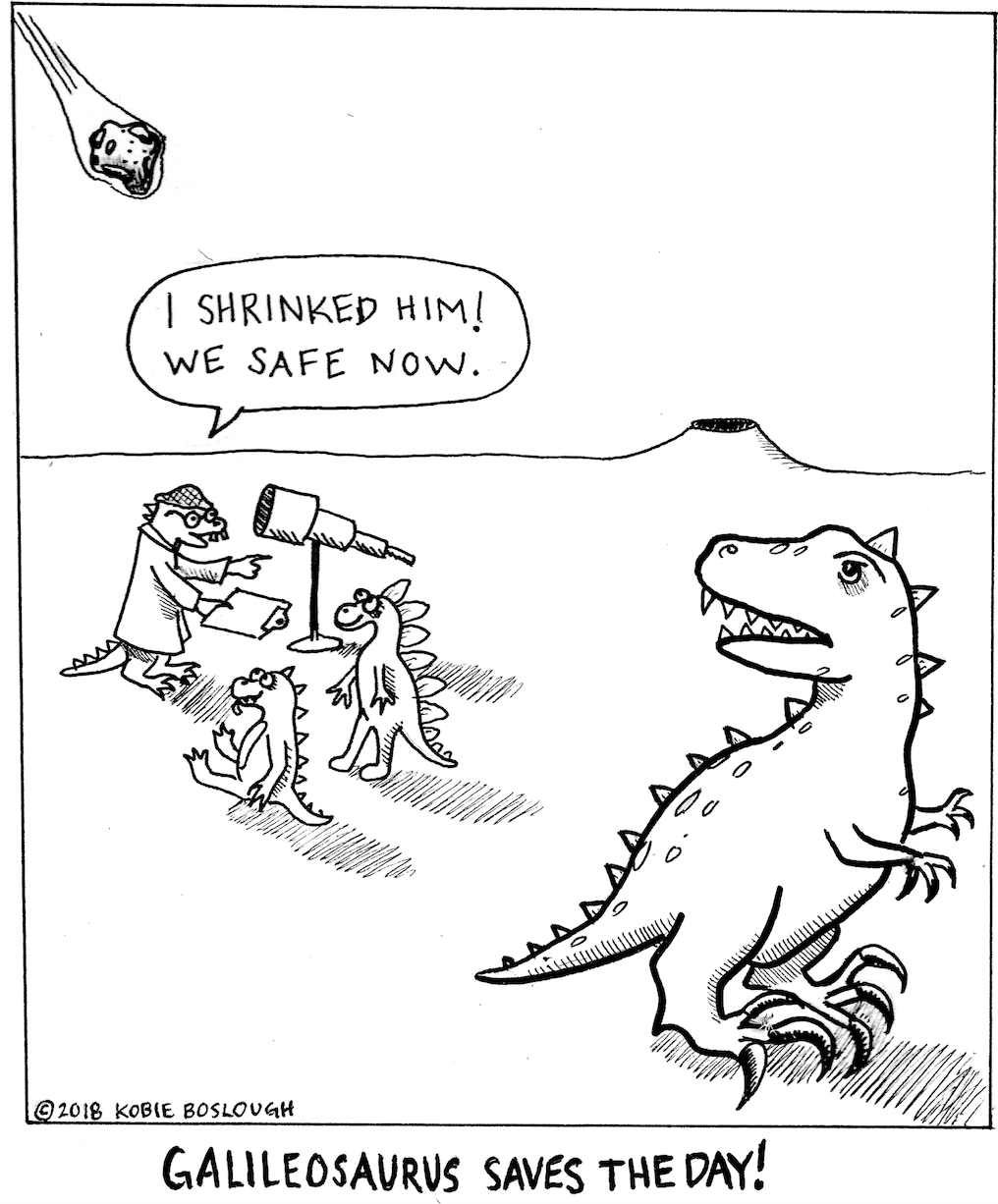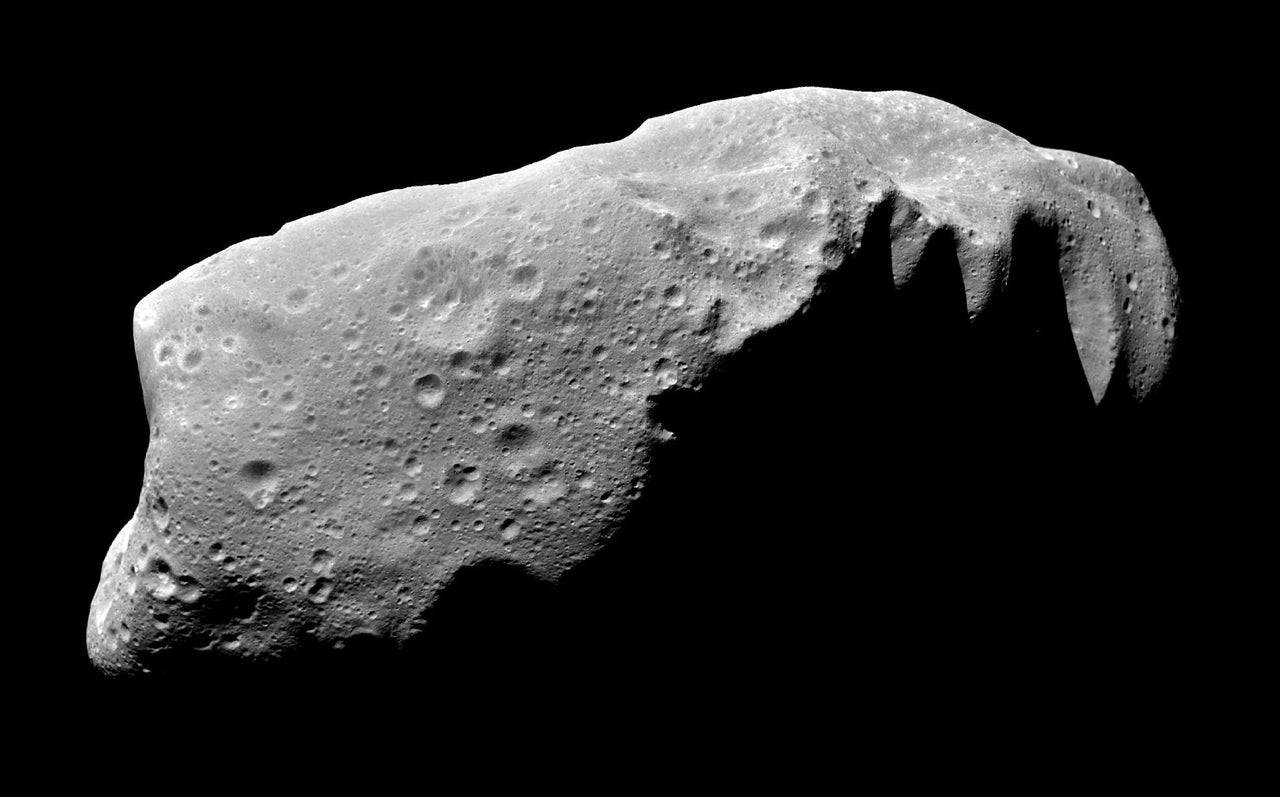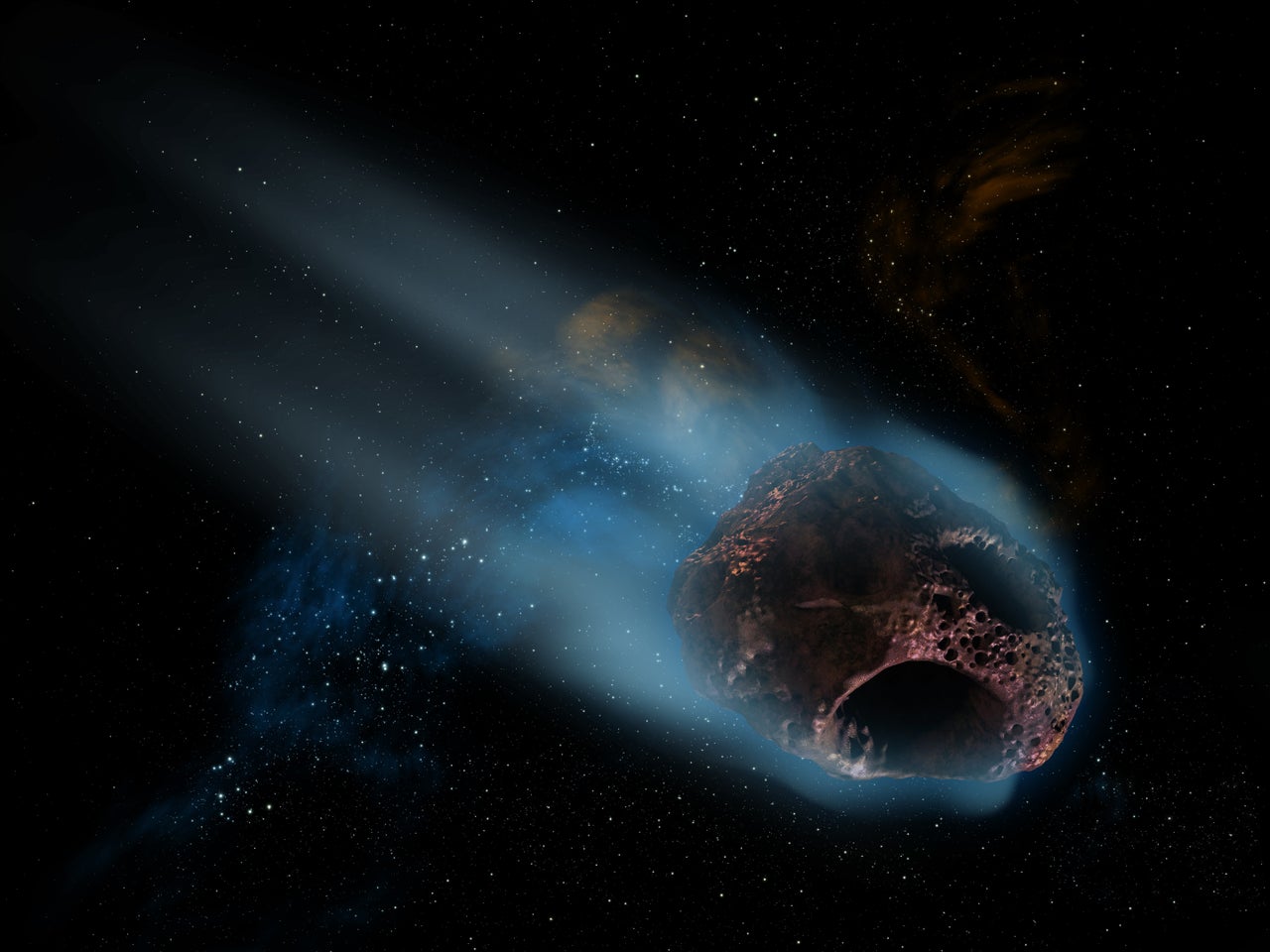
We live in a fruitful and abundant world that seems custom-designed for our physical and spiritual needs. It was not always so. Did the dinosaurs feel the same sense of security and belonging on the planet that had nurtured their own existence? Did they ever look up in reptilian wonder? If so, they saw points of light—the stars. Maybe they noticed some that wandered through the heavens on their own paths. In the final millennia of the dinosaurs’ existence, their birdlike brains might have noticed one shiny object that occasionally burned very bright as it passed near the Earth.
Then they had a bad day. Without warning, the dazzling wonderer plowed into a sea, releasing its unfathomable energy in a massive explosion, with blast and heat that would dwarf a global thermonuclear war. Debris engulfed the world, creating a planetary convection oven by filling the atmosphere with glowing hot vapour, steam, molten lava, and embers. The raging global firestorm wiped out most of the beasts. Endless darkness, bitter cold, and deprivation descended. The atmosphere was changed forever. The climate crossed a tipping point. Ecosystems collapsed. There were no survivors among the ruling animals.
Surely these creatures loved their home as much as we do, in their own lizardesque way. If they’d had science and technology, could they have defended it? Or would they have procrastinated, or squabbled over politics of who pays and how to distribute risk among the various species and regions?

The rules of orbital mechanics were exactly the same 66 million years ago. Johannes Kepler was able to predict planetary motion even before Newton worked out the physics that governs it. If dinosaurs had had a VelociKepler, could they have known of the impending apocalypse? Could a SaurIsaacNewton have designed a kinetic impactor to deflect it? Could rocket technology of a VonBraunasaurus have intercepted it? Could they have nuked it if they’d had a Triceritoppenheimer?
We humans have been systematically surveying the heavens for near-Earth objects for more than two decades. A threatening extinction-class asteroid would have been discovered by now, but a large comet could yet appear without much warning. Still undiscovered are smaller asteroids that have apocalyptic potential, killing billions of people and bringing down civilisation. Survivors of such an event might envy the dead after finding themselves on a transformed and unrecognisable sphere.
Sky surveys are the first line of defence. We can’t protect our planet from something we don’t know about. If we find an object on a collision course, then planetary defence would require advanced spacefaring technology to prevent the crash. This could be done by using a kinetic impactor or nuclear explosion to change its speed just enough so that it misses the Earth.
Humans already have interplanetary rockets and nuclear devices. In practice, these tools have never been used together in deep space, and our experience at intercepting asteroids is very limited. Such a mission would require many years or even decades to execute, so finding the next threatening asteroid is by far the most urgent step.
Unfortunately, the current discovery rate is far too slow to find every potentially apocalyptic impactor within the next decade. Earth-based telescopes, like dinosaur eyes, can only see objects that are sufficiently large or close to shine brightly in sunlight. But asteroids are also heated by the sun. Thermal infrared is invisible to telescopes or animal eyes (human or lizard). Detectors that are sensitive to this wavelength must be above the atmospheric heat to be effective. That’s what NEOCam–the Near-Earth Object Camera―is about.

If launched, this space-based infrared telescope will discover and characterise two thirds of the most dangerous asteroids within five years. Where there’s risk there is also opportunity. NEOCam will furthermore help us study the origin of the solar system and enable asteroid exploration and exploitation. It will be an indispensable tool for humans to dynamically map the inner solar system and open up the next frontier in collaboration with a number of private entities, non-profit organisations, and publicly-funded Earth-based surveys like the Large Synoptic Survey Telescope, Pan-STARRS, Catalina Sky Survey, and ATLAS. Other humans have created the new B612 Asteroid Institute to contribute to the tracking, identification, analysis, and understanding of how to do a better job responding than the dinosaurs did.
Regrettably, NEOCam was not among the two Discovery Mission finalists selected by NASA early last year, and research funding is nearing the end of its one-year extension. A final decision for this first line of planetary defense is imminent, but the laws of physics that govern the timing of the next impact won’t wait. If an asteroid pushes the reset button on the human race like it did for the dinosaurs, it won’t be for lack of scientists and visionaries. We humans had our Kepler, Newton, von Braun, and Oppenheimer (among many other smart men and women). What will our excuse be?
You can follow Mark on Twitter @MarkBoslough
HuffPost UK Tech has launched HuffPost-Apocalypse, a project that aims to investigate what an apocalypse would mean for humanity, how we can best delay the end of the world, what the world will look like after we’re gone and what the best viable options for survival will be for anyone left. Join in the conversation with #HuffPostApocalypse on Twitter. To read more from the series, visit our dedicated page.
